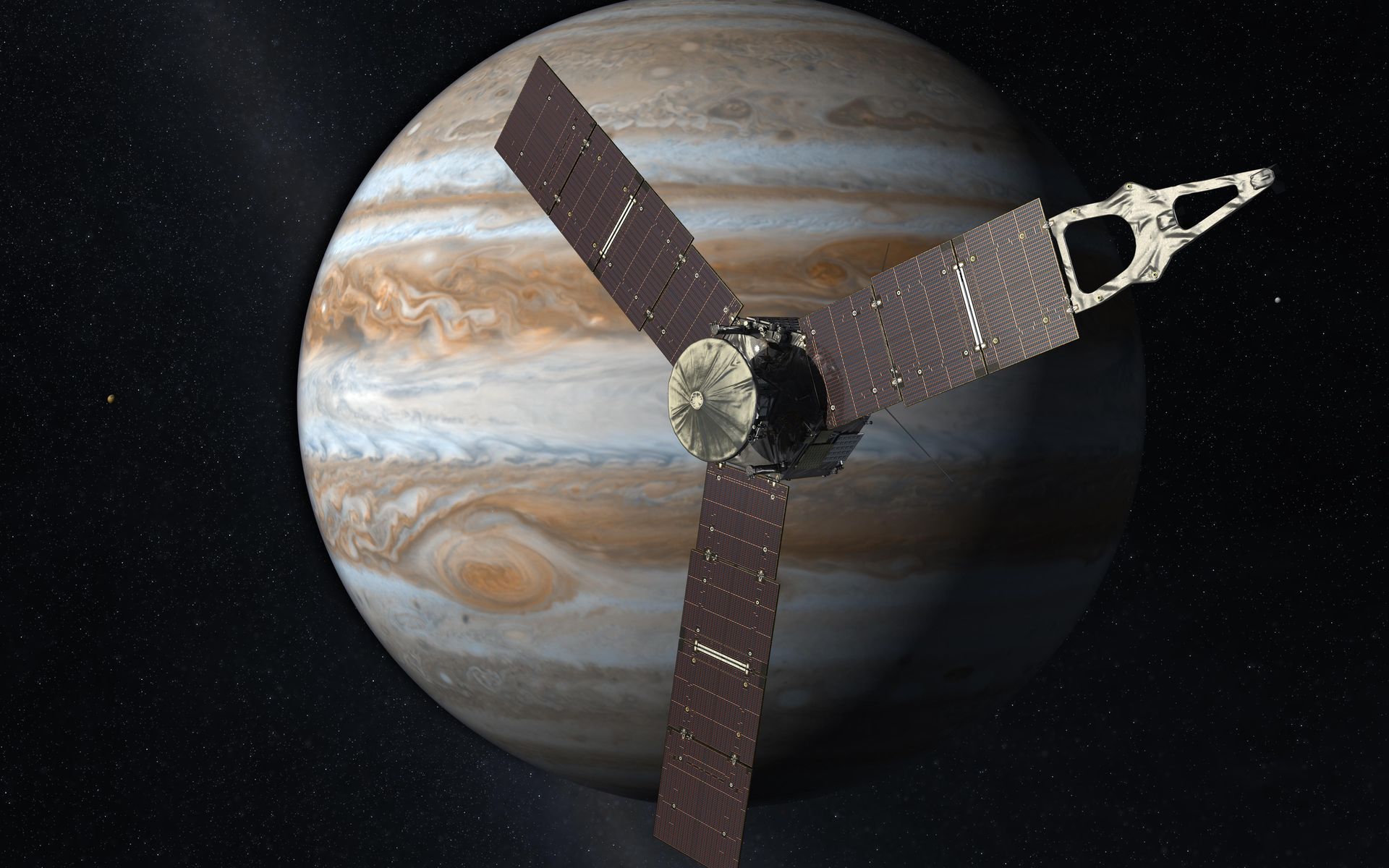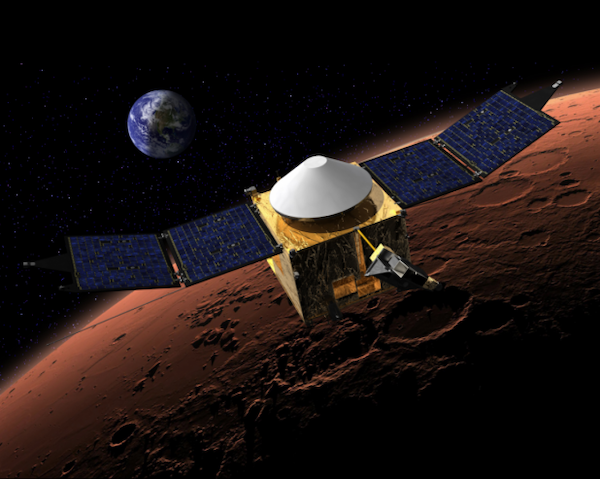Missions & Projects
Featured
Alphabetical
By Last Name:
Displaying records 1 to 4 of 4.
Show:
Juno
The Juno spacecraft successfully entered the orbit of Jupiter on July 4, 2016. Its suite of instruments allow it, for the first time, to peer below the dense cover of clouds to answer questions about the gas giant and the origins of our solar system. Juno's primary goal is to reveal the story of Jupiter's formation and evolution. Using long-proven technologies on a spinning spacecraft placed in an elliptical polar orbit, Juno observes Jupiter's gravity and magnetic fields, atmospheric dynamics and composition, and evolution.
Key Staff
- Science Team Member: Daniel Gershman
- Participating Scientist: Sander Goossens
- Co Investigator: Katherine Garcia-Sage
- Co Investigator: John Connerney
- Co Investigator: Gordon Bjoraker
- Co Investigator: Weijia Kuang
Instruments

JUNOMAG
The JUNO magnetic field's investigation will provide measurements of the Jovian magnetic field over a wide dynamic range. The fundamental objectives of this investigation are to map the magnetic field, determine the dynamics of Jupiter's interior, and determine the three-dimensional structure of the polar magnetosphere and its auroras. Juno was inserted into orbit around Jupiter on July 4, 2016.

Lunar Environment and Dynamics for Exploration Research (LEADER)
LEADER is a SSERVI project that explores the lunar environment and the two-way connection with human systems, providing the first ever studies of this Human-Environment interaction feedback cycle

Mars Atmosphere and Volatile Evolution Mission (MAVEN)
The Mars Atmosphere and Volatile Evolution (MAVEN) mission is the first orbiter devoted to understanding the Martian upper atmosphere. Research suggests suggests that Mars once had a thicker atmosphere and was warm enough for liquid water to flow on the surface. MAVEN's instruments are exploring Mars' upper atmosphere, ionosphere, and interactions with the sun and solar wind to determine the role played by loss of atmospheric gas to space in the evolution of the Martian climate through time. Goddard's Planetary Environments Laboratory developed MAVEN's Neutral Gas and Ion Mass Spectrometer and the Planetary Magnetospheres Laboratory developed MAVEN's magnetometer. The MAVEN mission launched November 18, 2013.
Key Staff
- NGIMS Operations Lead: Jaykumar Vaidya
- RESEARCH SCIENTIST: Rachel Maxwell
- Project Scientist: Joseph Grebowsky
- Instrument Scientist: Mehdi Benna

